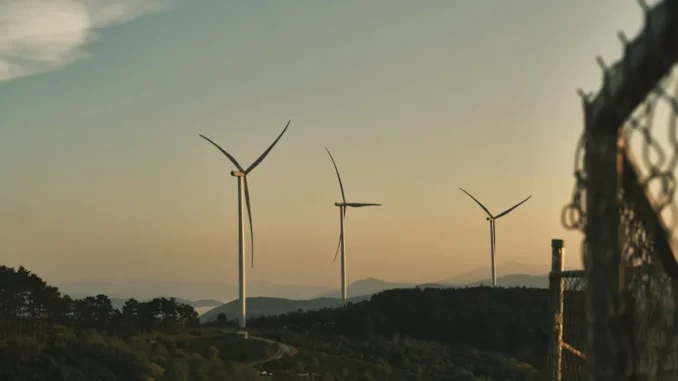
As the world becomes increasingly dependent on digital infrastructure, the environmental impact of data centres has come under significant scrutiny. Recently, I had the opportunity to sit down with David Burton, a Consultant at OryxAlign, to discuss the future of sustainable data centres and the industry’s shift toward greener practices. Our conversation shed light on the complex yet fascinating journey of data centres towards sustainability, focusing particularly on the importance of certifications like LEED and BREEAM.
Successful low-energy building design hinges on careful planning. Focus360 Energy can help.
Renewable Energy Integration
Data centres are notorious for their high energy consumption, accounting for approximately 1% of the world’s total energy usage. As our reliance on data continues to grow, so does this figure. But the landscape is changing, thanks to the pioneering efforts of industry leaders who are integrating renewable energy sources into their operations.
David Burton explained, “The shift towards renewable energy in data centres is not just a trend; it’s a necessity. We see a growing number of companies investing in solar, wind, and hydroelectric power to ensure a sustainable future.”
Over 40% of the energy used by data centres globally now comes from renewable sources. Giants like Google and Microsoft have committed to achieving 100% renewable energy use by 2030. This transition is setting a precedent for other companies to follow, showing that it’s possible to meet our digital needs without compromising the planet.
Energy Efficiency Innovations
One of the most significant challenges for data centres is managing the heat generated by servers. Traditional cooling methods are energy-intensive, but innovative solutions are emerging. Liquid cooling systems, which use a cooling liquid to absorb heat, are becoming increasingly popular. These systems are more efficient than air cooling and can reduce water usage by up to 90%.
“Liquid cooling represents a major breakthrough in data centre efficiency,” David noted. “By directly cooling the server components, data centres can drastically reduce the energy needed for air conditioning and other traditional cooling methods.”
Additionally, the adoption of energy-efficient hardware is helping to lower the overall power consumption. Advanced chips and components are being designed to perform more computations per watt, reducing the energy footprint of data centres.
AI and Automation for Energy Management
The integration of artificial intelligence (AI) and machine learning (ML) is revolutionising data centre operations. These technologies optimise energy consumption, predict maintenance needs, and improve overall efficiency.
“AI and automation are crucial tools for the modern data centre,” remarked David. “They help cut costs and play a significant role in minimising environmental impact.”
AI algorithms can analyse vast amounts of data to identify patterns and make real-time adjustments, ensuring data centres run as efficiently as possible. According to some studies, AI-driven data centre operations can reduce energy consumption by up to 15%.
Green Certifications and Standards
As the industry moves towards greener practices, certifications like LEED (Leadership in Energy and Environmental Design) and BREEAM (Building Research Establishment Environmental Assessment Methodology) have become benchmarks for sustainability. Achieving these certifications signifies a commitment to energy efficiency and environmental stewardship.
David emphasised the importance of these standards: “Green certifications provide a framework for companies to follow. They help set measurable goals and offer a way to communicate a commitment to sustainability to clients and stakeholders.”
OryxAlign recently released a green buildings guide, ‘Achieving Green, Healthy and Cyber Secure Buildings’, which reviews all the major green certifications and the technology required to achieve and monitor them. This guide serves as a valuable resource for companies looking to adopt sustainable practices.
Case Studies: Leading the Way
Several companies are setting examples with their green data centres. For instance, Facebook’s data centre in Odense, Denmark, is one of the most advanced in terms of energy efficiency. The facility utilises wind energy and has a unique heat recovery system that channels excess heat to warm local homes.
“Seeing real-world examples like Facebook’s Odense Centre is inspiring,” David commented. “These pioneers are demonstrating that it’s possible to meet growing data needs without compromising the planet.”
Challenges and Opportunities
Transitioning to greener data centres is not without its challenges. The initial investment in renewable energy infrastructure and energy-efficient technologies can be substantial. Additionally, the rapid pace of technological advancement means that data centres must continually update their systems to stay at the forefront of efficiency.
However, the benefits are undeniable. Besides the obvious environmental advantages, sustainable data centres often enjoy lower operational costs in the long term. They are also better positioned to comply with future regulations and meet the increasing demand from consumers and businesses for eco-friendly practices.
Summary of Sustainable Data Centres
The future of data centres is undeniably green. As the industry continues to innovate, we can expect to see more widespread adoption of renewable energy, energy-efficient technologies, and smart management systems. These advancements are critical for the environment and make good business sense.
As David aptly put it, “Sustainability is no longer an option; it’s the future of data centres. The sooner we embrace it, the better off we’ll be.”
Marcia Snyder


Be the first to comment